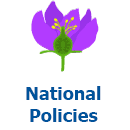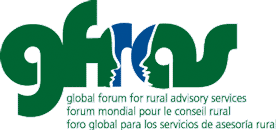 Every country has developed, formulated, and decreed national policies related to rural advisory services. Find some examples here. If you are looking for a national policy from a specific country, please use the search function, selecting the category “National policies” and the tag for the country.
Every country has developed, formulated, and decreed national policies related to rural advisory services. Find some examples here. If you are looking for a national policy from a specific country, please use the search function, selecting the category “National policies” and the tag for the country.
Sustainable Undernutrition Reduction in Ethiopia: Training manual for Health and Agriculture Development Armies
Written by Ingrid OliveiraThis training manual is designed for health and agriculture extension workers to train health and agriculture development armies as part of the Sustainable Undernutrition Reduction in Ethiopia (SURE) programme. It provides HDAs and ADAs the knowledge they need to improve infant and young child feeding and dietary diversity through the discussions they facilitate with their 1-5 and 1-30 community networks.
What Every Extension Worker Should Know - Core Competency Handbook
Written by Ingrid OliveiraThis handbook is designed as a reference manual for front-line extension staff to use in their day-to-day work. It offers a set of tools for effective communication, program planning and evaluation. It is meant to support and educate agricultural extension workers worldwide. The intended audiences of this handbook include: governmental agriculture, fisheries, natural resources and community development ministry officials; governmental and non-governmental extension district/regional managers; extension-related faculty and their students—preservice extension workers; and field-level agents, whether governmental, non-governmental or for-profit. We hope that this handbook will help advance efforts to empower and continue educating extension personnel through in-service training opportunities, continuing education programming and “train-the-trainer” programs. Such efforts may include targeting specific tools of interest to audiences and inviting scholars/practitioners to teach participants about them.
Sustainable Nutrition Manual Part 3: Healthy Designs
Written by Ingrid OliveiraThis part of the manual brings parts 1 and 2 together with your own knowledge and experience. It will guide you to create a personalised design for achieving sustainable nutrition and a better future. You’ll draw maps and sketches as you make your plans to make the most of all the resources that you have now, as well as building up resources for the future.
Sustainable Nutrition Manual Part 2: Healthy Environments
Written by Ingrid OliveiraThis part of the manual is about Natural Systems and Sustainability. You will learn about the Nature Cycle and the Water Cycle and an understanding about Soil Fertility and the benefits of Diversity in Nature will develop. You will be introduced to Permaculture designs and sustainable living practices. You will find out about renewable and non-renewable resources and begin to understand the wider issues of sustainability. This book can be used in your homes, offices, schools, communities, farms and gardens. You can discuss the ideas in it with others so that eventually your whole nation designs and lives sustainably.
Sustainable Nutrition Manual Part 1: Healthy Humans
Written by Ingrid OliveiraThis manual is for people who eat, grow or buy food and who want to improve their own lives, their community and the environment that they live in. It has been written for, and by, people living in Malawi, but the ideas in it can be applied anywhere in the world. It is for all people, everywhere, but most of all it is for you. Many people in Malawi have used this manual with great results and, if you use these ideas, you will also be able to:
- Improve your diet and health
- Save money that was spent on food, medicines and chemicals
- Double or triple yields and harvests (or even more!)
- Reduce the amount of watering in gardens and orchards
- Reduce the amount of work done on your land and in your home
- Have healthier plants and animals
- Reduce infertile and unproductive areas of land
- Use free resources to improve soil and water in your area
Pastoralist Field Schools - Training of Facilitators Manual
Written by Ingrid OliveiraThis PFS training Manual is designed for use by Master Trainers (MTs) during the training of facilitators course. Each lesson/topic is complete in itself detailing the preparations to be made, the materials to be kept handy, the core message to be communicated, and the methods that can be used in communicating the messages. A few sessions may require the presence of a technical person as co-facilitator, but the rest can be handled by any person who has been trained as a PFS Master Trainer.
Nutrition Education Training for Agriculture Extension Officers
Written by Ingrid OliveiraNutrition Sensitive Agriculture Trainer Manual for Agriculture Development Agents
Written by Ingrid OliveiraIn order to impact on the nutritional outcomes, there is a need to focus on nutrition-sensitive agriculture. Nutrition-sensitive agriculture involves the incorporation of nutritional concerns into the design and implementation of agricultural policies, projects and investments, targeting nutritionally vulnerable groups with these investments and particularly focusing on women and increasing year-round access to diverse, nutrient-dense foods. Development agents (DAs) or agriculture extension workers (AEWs) are at the forefront of the support available to farmers for improved agricultural production and opportunities to increase income. This nutrition-sensitive agriculture training aims at building the knowledge and skill of DAs in nutrition-sensitive agriculture so that they can promote agricultural and related practices that have the potential to maximize nutritional benefits.
Nutrition Program Planning and Supervision for Health and Agriculture Program Managers
Written by Ingrid OliveiraIn order to impact on the nutritional outcomes, there is a need to focus on nutrition-sensitive agriculture. Nutrition-sensitive agriculture involves the design and adoption of cropping and farming systems (crops and animal) which can provide agricultural solutions to the prevailing nutritional problems. Development agents (DAs) or agriculture extension workers (AEWs) are at the forefront to support farmers for improved agricultural production and better income. This nutrition-sensitive agriculture training aims at building the knowledge and skill of DAs in nutrition-sensitive agriculture so that they can promote agricultural and other related practices that maximize nutritional benefits.
Nutrition-Sensitive Agriculture: Participant Manual for Agriculture Development Agents
Written by Ingrid OliveiraIn order to impact on the nutritional outcomes, there is a need to focus on nutrition-sensitive agriculture. Nutrition-sensitive agriculture involves the design and adoption of cropping and farming systems (crops and animal) which can provide agricultural solutions to the prevailing nutritional problems. Development agents (DAs) or agriculture extension workers (AEWs) are at the forefront to support farmers for improved agricultural production and better income. This nutrition-sensitive agriculture training aims at building the knowledge and skill of DAs in nutrition-sensitive agriculture so that they can promote agricultural and other related practices that maximize nutritional benefits.
More...
Projet conjoint de lutte contre la malnutrition chronique - Module sur l'approche champ école paysan
Written by Ingrid OliveiraLe travail de vulgarisation a été traditionnellement perçu par la recherche et les services de vulgarisation comme un mécanisme pour transférer les technologies aux fermiers. Cette approche, toutefois, s’est montrée inadéquate dans des situations complexes où les fermiers doivent fréquemment ajuster leurs activités à des changements de conditions agro climatiques (protection de la récolte, gestion des éléments nutritifs du sol, etc ……). Certains atouts technologiques, transmis via une approche de haut en bas, étaient souvent trop complexes, chers et mal adaptés aux besoins des fermiers. Les agents de vulgarisation se sont rendus compte que les fermiers n’étaient pas suffisamment impliqués dans l’identification des problèmes, la sélection et l’expérimentation d’options, et l’évaluation des solutions possibles. Avec la baisse du support gouvernemental au travail de vulgarisation traditionnel, il devint clair que des méthodes alternatives étaient nécessaires pour identifier les problèmes auxquels faisaient face les fermiers et pour disséminer les technologies appropriées.
Maximising the Nutritional Impact of Food Security and Livelihoods Interventions
Written by Ingrid OliveiraThis manual aims to provide practical guidance to field workers in order to maximise the nutritional impact of food security & livelihoods (FSL) interventions. This requires the systematic use of a ‘nutrition lens’ at each step of the project cycle and a close collaboration between sectors. The manual has its roots in ACF International strategy 2010-20151 and the FSL strategic outline for 2011-20152, and embodies the mandate of the organisation to fight hunger and to centre its efforts on undernutrition. It is also in line with the current international movement to put maternal and child nutrition at the forefront of the agenda to address the complex crisis of undernutrition in the perspective of the 2015 Millennium Development Goals (MDGs).
Integrating Gender-Responsive & Nutrition-Sensitive Approaches When Working with Farmer Groups Engaged in Markets
Written by Ingrid OliveiraThis Training of Trainers Manual has been designed for use by government, private, and NGO extension providers and rural development practitioners who will be planning and implementing village-level agricultural interventions to strengthen their capacity to integrate gender and nutrition sensitivity for men and women farmer groups engaged in markets. This manual has been adapted to meet the needs of extension workers who train lead farmers and famer groups engaged in markets, as well as other actors in the agricultural value chains such as traders, AgroVets,1 and Community Business Facilitators (CBFs)2. While this manual has been adapted to the context of the Mid-west (Banke and Surkhet districts) and Far-west (Dadeldhura and Kailali districts) regions of Nepal,3 it can also be used as a guide for trainers to adapt and modify to their distinct cultural and agricultural contexts.

